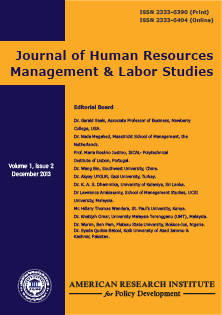10 Challenges Hr Faces In A Global Company

Content

The language barrier can be among employees, or between employees and the management. Employee communications should refer to the local culture and contain analogues that the locals can relate to. In order for a business to communicate to its overseas employees, it must first understand what makes sense to them.
The trends that have led to these issues are not slowing down, so it will be just as important for future human resource managers to understand international business as it is for current managers. For any company expanding into other countries, it is essential to have a strategy in place for the expansion. This applies equally to international human resource management, as it does to other aspects of the expansion.
- International businesses can no longer restrict themselves to locally available talent.
- They must invest in broader analytic frameworks to understand human resource management on a global scale.
- As of July 2012, the United States had the highest number of Global 500 companies, an annual ranking of corporations by revenue.
- A company’s human resource policy may fit within the legal framework of one country and not another.
- Harmonizing regional human resource management differences is a significant challenge that international businesses have to deal with.
Related to the idea of benefits and compensation in international HR are training and professional development programs. Training programs typically encompass in-house seminars and meetings designed to give employees on-the-job knowledge of skills that are important to doing business globally. Professional development helps employees to hone their skills in global marketing, international business development and finance trends. Most organizations do not handle expatriation and repatriation well. International assignments typically cost three times the individuals base salary and roughly 60% repatriations result in the assignee leaving within six months after return. Awareness of culture shock and reverse culture shock will assist in managing assignments.
Of Todays Common Human Resource Challenges
As businesses begin to expand into the global marketplace or as they hire employees from diverse geographic and cultural backgrounds, they may have to adapt to new labor laws and tax liabilities. Doing business in Europe, for example, will require the business to pay value added tax. Hiring employees who are non-naturalized US citizens might require HR to apply for work visas and report economic data to the federal government. Compliance with international law can be an issue for the under-educated business owner or HR manager, because these laws tend to be complex and sometimes difficult to implement.
A company’s human resource policy may fit within the legal framework of one country and not another. Harmonizing regional human resource management differences is a significant challenge that international businesses have to deal with. Finally, economic considerations include dealing with multiple locations in different countries, foreign currencies, and tax laws that differ from country to country, and negotiating compensation for expatriates.
Compliance And International Hrm Issues
By focusing on recruitment, global mobility, compensation, training, and organizational structure, you will be in the best position to exploit the benefits of global expansion. Distance is one of the greatest international human resources issues. Building a cohesive company culture and providing consistent policies and training around the world is difficult. You may have variable talent pools in different countries for certain positions, which can lead to major talent gaps in different office or business locations. Additionally, your company often must provide infrastructure and technology tools for colleagues to communicate from global locations. In marketing, for instance, colleagues around the world must collaborate on goals, strategies and tactics. Managers must consider three broad categories of issues when dealing with international business strategies.

Along with the changing role of HR is a move to more strategic issues and outsourcing some functions so they can best manage and grow their company cost effectively. It’s safe to say that companies today are constantly examining their HR function with a goal of figuring out best practices and best allocation of time. candidate, it will be difficult to change them.Most people can pick up new skills with relative ease if you have the time to train them.
What Are The Ethical Issues In Human Resource Management In Multinational Corporations?
As of July 2012, the United States had the highest number of Global 500 companies, an annual ranking of corporations by revenue. International businesses can no longer restrict themselves to locally available talent. They must invest in broader analytic frameworks to understand human resource management on a global scale.
It does not want to limit the local offices, but it needs a global corporate governance as the growth of the organization is managed. The international HR Management is the best answer to the need of the unified approach in the people management around the Globe. Often, companies underestimate the cost of training and developing foreign labor. Employees in emerging economies may cost less, but they must still be trained and leading that training may offset lower costs in the form of lower productivity and slower production time. Additionally, companies may encounter higher costs for expatriate managers, those employees from the home country that need to be compensated extra to visit or live in the host country to manage the new workforce. International business trends present managers and human resource leaders with opportunities and challenges for staffing. Opportunities to outsource, or having people or providers outside the company perform some duties, is common.
HR managers must coordinate human resource strategy, systems and processes consistently and effectively across national borders. In addition to cultural diversity, international businesses have to deal with language barriers.
Keeping well-informed of the legal requirements for the business’s operations can help alleviate some of this complexity and lessen the chances of landing in legal trouble. Efficient international human resource management, means putting in place a strategy to effectively manage your global workforce.

Here we set out five tips for developing an international human resources strategy, and managing an international workforce. A key trait of effective human resource management is to understand and reconcile cultural differences within the organization and harmonize these relationships. Training and development doesn’t have to take a lot of time or money. Recruit managers and senior leadership in mentoring their subordinate employees.
The extent to which human resource practices should integrate in each country or differ to respond to local requirements is a critical issue facing international business. A natural tendency is for businesses to shape their human resource practices to fit into those of the parent company. A need to benchmark a company’s best practices can also influence decision makers towards convergence, but giving more local autonomy to ensure the locals’ needs are adequately met can mean embracing a divergent approach. The top management of the organization needs to utilize the full potential of the global organization. Many ideas are born in local offices and they have to be transferred as the best practices to other offices.
Specifically, offshoring, or outsourcing jobs to emerging economies while simultaneously getting lower-cost labor, may be a viable solution. Sometimes, offshoring gets a bad reputation, and certainly, if it is exploiting vulnerable populations, that reputation may be deserved. But when managed responsibility, outsourcing can be a benefit to the local economy and the employer.
Stopping cultural exchanges from occurring or training everyone in a company to be prepared to handle every situation they may face isn’t possible. Instead, human resource managers and supervisors who manage teams of diverse employees must be able to teach sensitivity and cultural awareness. A salient issue in international HR is understanding and maintaining cultural diversity. Working with people from different locations or from different cultural backgrounds mean adapting the business’s work style to new ideas, new ways of communicating and unfamiliar social practices. If you hire an employee from England, for example, the employee might have different ideas about how to manage employees or on how to run technology processes based on her experiences back home. Being open to new work styles and cultural differences is the hallmark of cultural diversity in HR.
Most companies pay relatively little attention to culture despite its importance. It has been proven that actively managing and developing culture through hiring can significantly improve employee retention and performance. In the end, this directly influences organizational profitability and growth. The global company needs a mobility of employees as it can build a better global management structures.
What will be the role of HR in 2025?
By 2025, we can expect HR professionals to take on the role of championship coaches, guiding businesses through expected disruptions and becoming an essential part of HR strategy and planning. Also, HR departments would become more agile, achieving faster decision-making through improved collaboration.
The first is staffing, primarily where will they source labor and how will they develop that talent. The second is culture and communication, an issue no matter how local or central production may take place. Finally there are the economic considerations – specifically, compensation and taxation issues with local labor or expatriate employees. The idea of international business encompasses many trends, all of which impact human resource management to some degree. It isn’t just the trend of companies outsourcing labor, although that is a big part of it. International business includes the trends of growing customer markets to include new nations, finding new suppliers from other countries, and the movement of people around the world to support those trends.
HR professionals are faced with addressing global issues on an ever-increasing basis. This is true even for organizations that historically only operated in a domestic environment. While many of the HR competencies apply to domestic HR practitioners, new and heightened global skills are required for HR practitioners to deal with international issues. Human resources managers face a number of common challenges, including legal requirements, diversity and employee motivation. When you throw “international” into the mix, as is the case with a global company, the issues escalate.

